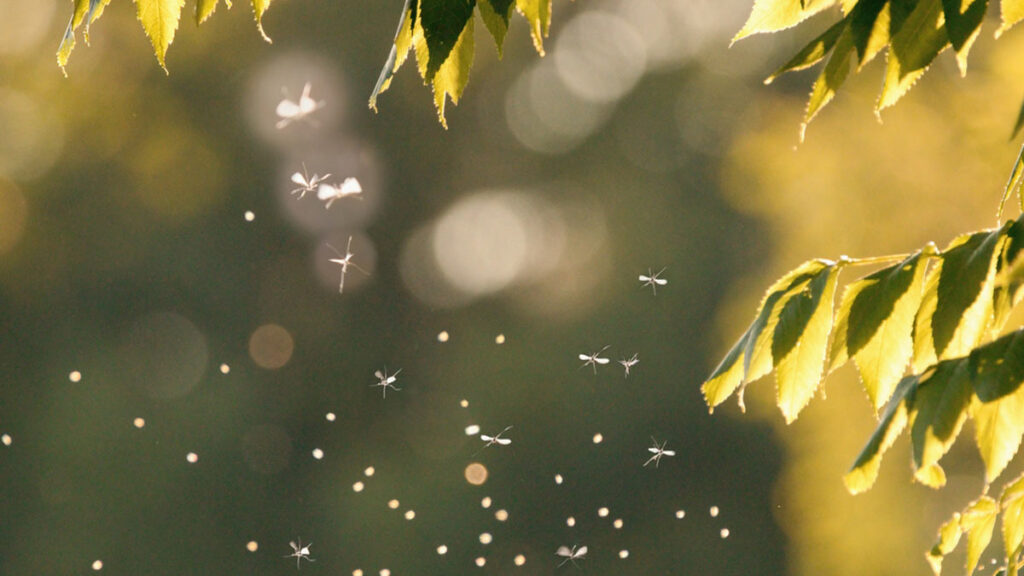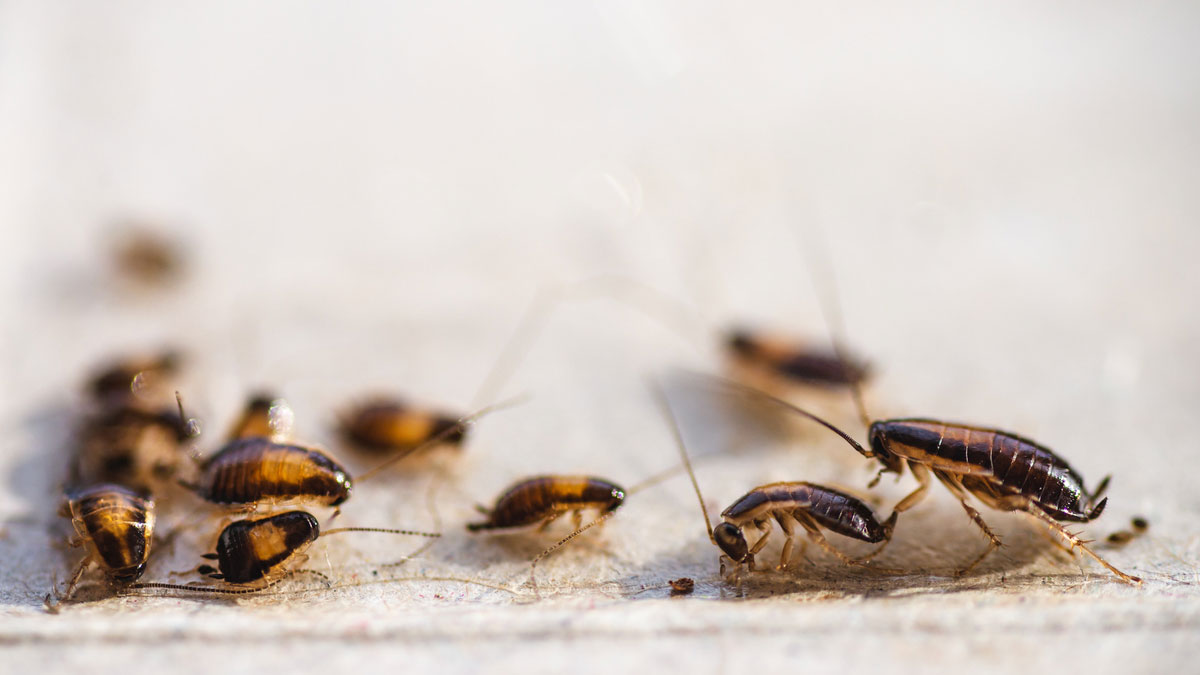
The Cockroach Crisis in Florida
A Comprehensive Guide to Understanding and Controlling Florida's Roach Populations
Updated on: January 2024

Understanding the Cockroach Crisis in Florida’s Climate
Cockroach control in Florida is a matter of public health, property value, and ecological balance. The state’s warm and humid climate makes it an ideal ground for various pests, among which cockroaches stand out due to their resilience and rapid reproduction rates. While multiple species inhabit Florida, the German cockroach and the American cockroach are notably predominant, each leaving its unique footprint on the environment. These insects play roles in ecosystems, often aiding in decomposition. However, unchecked growth of their populations presents challenges that stretch beyond the boundaries of individual homes, necessitating a comprehensive understanding of their habits and impacts.
Find What You Need
Florida’s unique blend of tropical and subtropical climates makes it home to several cockroach species, but two are particularly noteworthy. The German cockroach, scientifically known as Blattella germanica, often lurks in kitchens and bathrooms, identifiable by its light-brown color and two dark stripes. The American cockroach, or Periplaneta americana, larger and reddish-brown, tends to be found in damp areas like basements and sewer systems. As urbanization continues throughout the state, natural habitats get disrupted, inadvertently providing cockroaches with more opportunities to infest human-made structures. New constructions, often lacking in initial pest control measures, and the expansion of city limits push these insects from their natural habitats, facilitating their spread.
Cockroaches thrive in warm, damp environments, making Florida’s wet summers optimal for their proliferation. As for seasonal fluctuations, while many pests diminish in colder months, Florida’s mild winters don’t serve as a significant deterrent for cockroach activity. They remain relatively active year-round, only experiencing a slight decrease in the cooler months, especially in Northern Florida regions.
The geography of Florida also influences cockroach activity. While the entire state is susceptible, certain regions, such as the low-lying areas around Miami-Dade and the marshy regions of the Everglades, tend to see higher infestations. These areas, abundant in moisture and warmth, provide the perfect backdrop for cockroach populations to burgeon. Contrastingly, the slightly cooler and less humid regions, like those in the Panhandle, may not face as frequent severe infestations, though no area is exempt.
Take Away
Controlling Florida’s cockroach populations influences health, property, and environmental well-being. While pesticides offer a quick fix, strategies emphasizing sanitation, landscaping, and community collaboration promise sustainable and eco-friendly solutions. A collaborative and environmentally conscious approach is the best defense against cockroach populations.
Health, Home, and Environment
Cockroaches are a prevalent pest in Florida and intersect with a variety of factors. Understanding their potential impacts is important in mitigating their effects.
Health Concerns
Cockroach infestations bring about significant health concerns. Roaches, by nature, are scavengers, traversing through garbage, drains, and other unsanitary places. Consequently, they become carriers of various pathogens, including E. coli and Salmonella, risking contamination of food and surfaces in homes. Additionally, cockroach feces, saliva, and shedding body parts contain allergens which can exacerbate asthma symptoms, especially in children. For those with sensitivities, these allergens can lead to frequent sneezing, skin rashes, and even more severe respiratory complications.
Impact on Property
A noticeable infestation on one’s property can dramatically reduce a home’s market value. For instance, in premium neighborhoods like Coral Gables or Boca Raton, where average property prices hover around $600,000, even a 5% reduction due to pest issues equates to a significant $30,000. Beyond the monetary aspect, infestations can cause structural damage. Cockroaches, especially the wood-loving species, can degrade wooden structures, wallpapers, and even certain plastics. The very presence of these pests suggests potential sanitation issues, making properties less appealing to potential buyers or tenants.
Environmental Implications
From an ecological standpoint, cockroaches play a role in breaking down organic matter, serving as a form of natural recycling, and acting as a food source for numerous predators. However, the environmental impact of combating these pests raises concerns. Pesticides, like Raid or Bengal Roach Sprays, if overused, can contaminate soil and waterways, posing threats to non-targeted species. For instance, runoffs containing chemicals from pesticides can make their way into Florida’s intricate water system, endangering aquatic life and compromising water quality. While these products offer quick relief, their residual environmental footprint calls for judicious use and a shift towards more sustainable solutions.
Effective Control Strategies
Various solutions from maintaining a clean environment, altering outdoor spaces, and utilizing chemical pesticides, to relying on natural alternatives all offer effective solutions in controlling and mitigating cockroach populations and infestations.
Sanitation and Cleanliness
Sanitation and cleanliness form the first line of defense against cockroach infestations. By ensuring regular garbage disposal, meticulous cleaning of kitchen areas, and avoiding food remnants or spills, one can greatly reduce the roach appeal of a home. Often, Florida residents inadvertently create inviting habitats for roaches by leaving pet food out overnight, neglecting to fix water leaks, or storing food improperly. Simple measures, such as sealing food in airtight containers and promptly cleaning any spills, can deter these pests.
Landscape Level Interventions
Landscaping can also influence cockroach populations. Overgrown vegetation, mulch piles, or accumulated leaf litter near homes can provide breeding grounds for roaches. A buffer zone free of thick vegetation around the home’s perimeter can be beneficial. Interestingly, some plants like catnip, osage orange, and chrysanthemum have repellant properties against roaches, making them worthy additions to Florida gardens.
Pesticides and Resistance
Turning to commercial solutions, several cockroach baits and traps, like Combat Roach Killing Bait or Black Flag Roach Motel, are favored by Florida homeowners. They lure roaches in with attractants and then deliver lethal doses of insecticides, reducing the breeding population. However, over-reliance on chemical solutions can backfire. Certain cockroach populations in Florida have shown resistance to common pesticides, necessitating alternative or higher-dose treatments. The Florida Department of Agriculture has specific regulations and guidelines for pesticide usage, ensuring they are used safely and effectively, minimizing environmental impact.
Natural Predators and Organic Solutions
Natural solutions can help solve the roach problem. Predators like geckos, spiders, and certain beetle species are natural enemies of cockroaches and can keep their populations in check. Organic solutions are also gaining traction in Florida. Diatomaceous earth, a fine powder made from fossilized aquatic organisms, damages the exoskeleton of roaches, causing dehydration and death, offering a chemical-free option for residents looking for sustainable solutions.
Signs of Infestation and Seeking Professional Help
Recognizing the early signs of a cockroach infestation can make a significant difference in effective management. Residents should be aware of indications such as cockroach feces, which resemble ground coffee or black pepper, shed skins, or the unmistakable musty odor that a large infestation can produce. Another warning sign is seeing live roaches during the day, as they are nocturnal creatures and daytime activity often indicates overcrowding due to an infestation. While initial signs can be addressed with over-the-counter products like Raid Max or Ortho Home Defense, the scope of an infestation can sometimes overwhelm individual efforts.
When self-treatment seems to be failing, or if the infestation recurs, you should consider professional intervention. Reputable extermination services such as Orkin or Terminix offer comprehensive solutions that often combine baiting, spraying, and exclusion techniques to both eradicate the current population and prevent future infestations. While costs can vary based on the size of the property and the severity of the problem, residents can expect to invest anywhere from $150 to $500 for initial treatments, with follow-up services or maintenance plans potentially adding to the expense. That said, the assurance of a cockroach-free home often justify the investment in professional services.
Community and Education
Community-wide efforts can greatly enhance the impact of individual attempts to control cockroach populations. When neighborhoods collaborate, they create environments that are less inviting for pests across a broader area. Initiatives such as communal garbage disposal systems that ensure waste is sealed and collected regularly can cut down on food sources for roaches. Additionally, community-led yard clean-ups can address potential breeding grounds in public spaces. Joint ventures like these can be funded through homeowner association fees or local community grants. For instance, some Florida neighborhoods have seen success using community pest control services like “Ecolab” or “Rentokil”, which offer bulk rates, making them more cost-effective when contracted for larger areas.
Education supports these communal efforts as a well-informed community is better equipped to take preemptive measures, reducing the need for reactive solutions. Workshops, seminars, or information sessions led by experts can be important for this. Local councils or educational institutions can invite professionals from pest control companies or entomologists from institutions like the University of Florida’s Entomology Department. There, residents can learn about the biology and behavior of cockroaches, the latest in pest control technologies, and best practices for prevention. The cost of such educational initiatives can vary but it is worth it to create a community effort in managing cockroach infestations.


